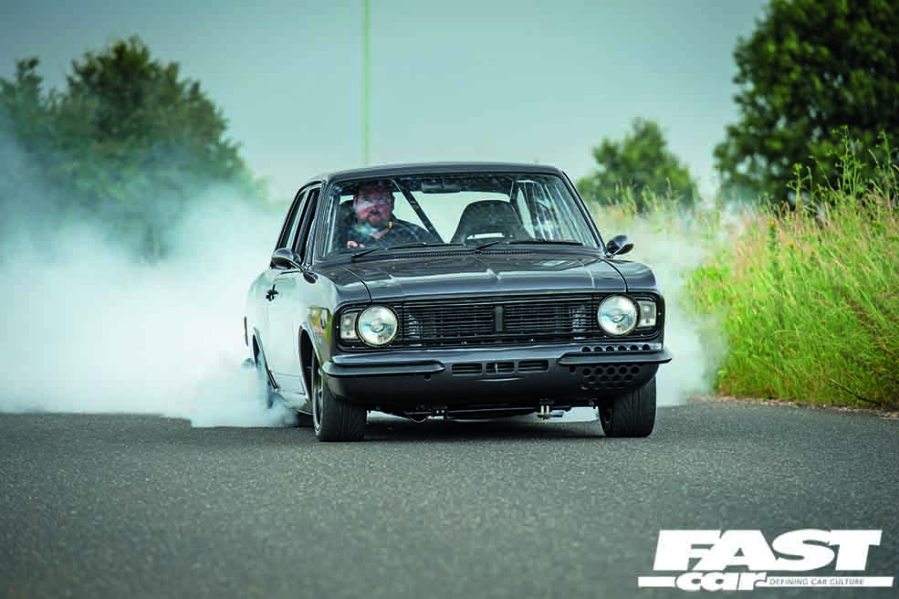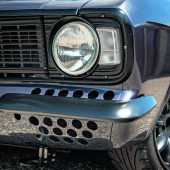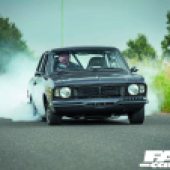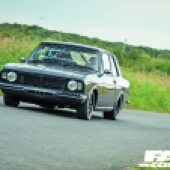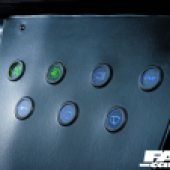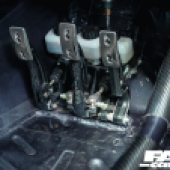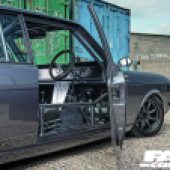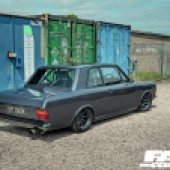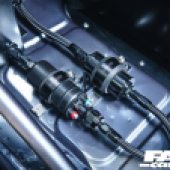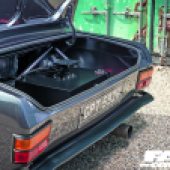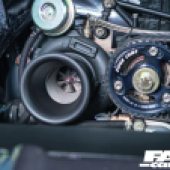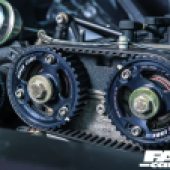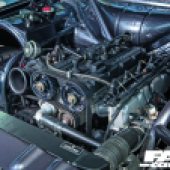James Wright’s modified Ford Cortina packs a whopping 390bhp cossie engine. This isn’t quite the usual restoration project you expect to see with many a Blue Oval-badged coupe. This one certainly puts the cooooor back into Cortina.
Certain cars have the ability to ooze presence in a way you just know they mean business. They seem to possess a menacing attitude without even turning a wheel and, safe to say, Jamie Wright’s modified Ford Cortina Mk2 absolutely nails that look. It’s the combination of that mean and moody exterior and low, hard stance, perfected with that super-wide rear rubber to fill the arches. You can certainly tell this is no mildly-modified restoration job with a lukewarm Crossflow, and that would be a correct assumption to make. Jamie’s car is packing some serious firepower and not just under the bonnet. From the custom spaceframe front end and complex cage to the adjustable suspension and big brakes, not to mention it’s backed up by nearly 400bhp of Cosworth YB power.
This Cortina has all the ingredients of a serious road-ready weapon, but it was always supposed to. Right from the start, Jamie set out to build a car unlike any other.
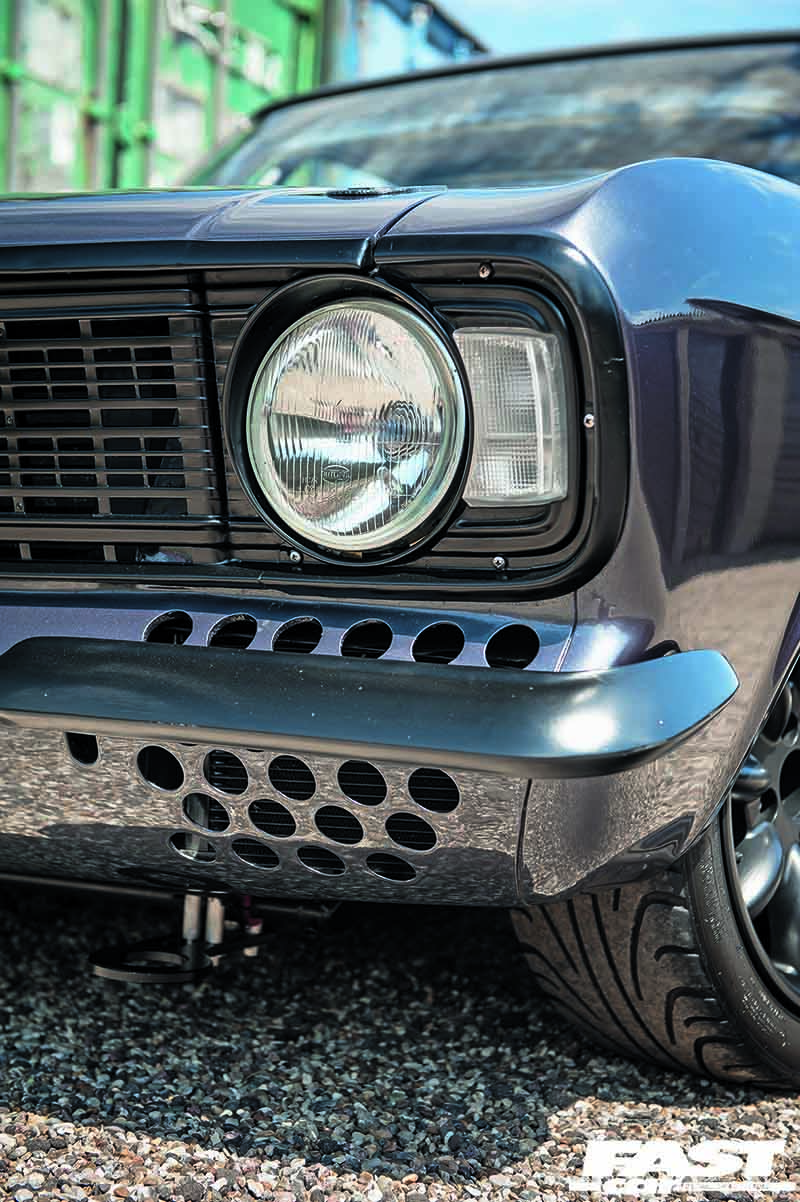
“As most retro Ford fans do, I started looking at Escorts but quickly came to the conclusion that I couldn’t really do anything that hadn’t been done before,” says Jamie. “But I saw the potential in a Mk2 Cortina. We hadn’t long finished working on my Dad’s Estate and a friend’s four-door, so I was familiar with them and at that time there weren’t many that had been taken to a highly modified standard. So, the plan was to try and push what had been done before with a road going Cortina.”
This example was sourced on the internet as a rolling shell and although it wasn’t in the best state, it was cheap and a good base for what Jamie had planned, as he knew not much of the car would remain original. “It was for sale on the Old Skool Ford forum and had been on there for a while. I kept looking at it thinking it was cheap at £650. One road trip later it was on the trailer and heading home with me.”
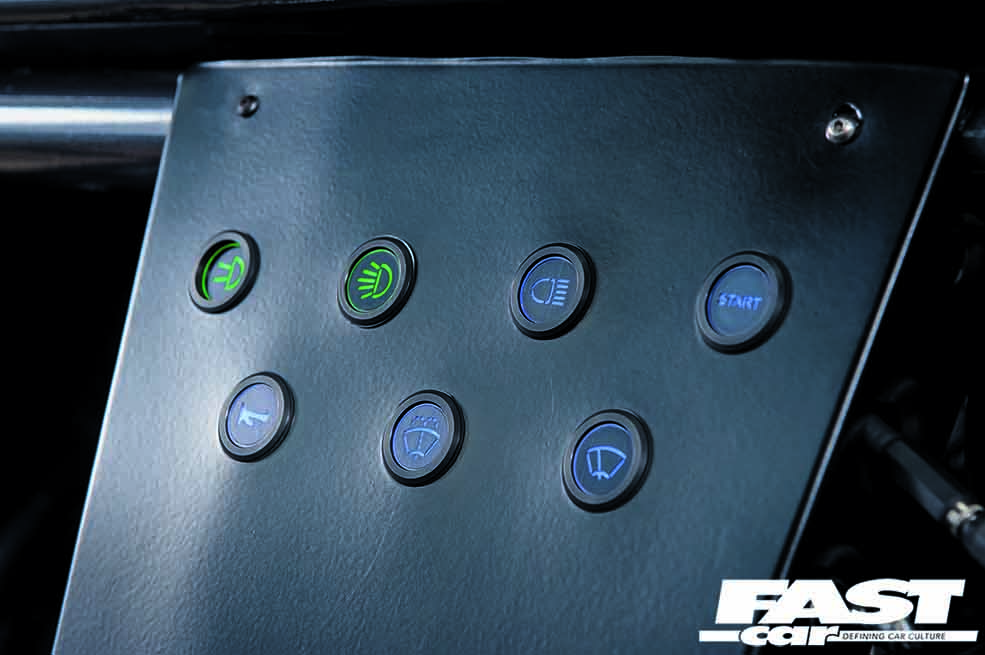
At first, the car was stripped down and blasted to see what Jamie was working with. It turned out to be quite solid, but needed the usual rear quarter, sills and front wing repairs. After the bodywork was completed, attention was turned to mounting the engine and gearbox and at the heart of the build was the plan was to go for a YB turbo, as big horsepower was a must. Although Jamie admits the idea of fitting a small V8 did also cross his mind! This particular YB engine was built by Cosworth tuning guru, Harvey Gibbs and features a long-studded 200 block, a standard head and a T34 turbo, producing a wholesome 389 bhp and 400 lb/ft of torque.
Jamie then moved onto to beefing up the rear, so an Atlas axle was made up by Atkins Motorsport, with the correct width to shoehorn those 9×15-inch wheels inside the standard inner arches, which was an important part of the build.
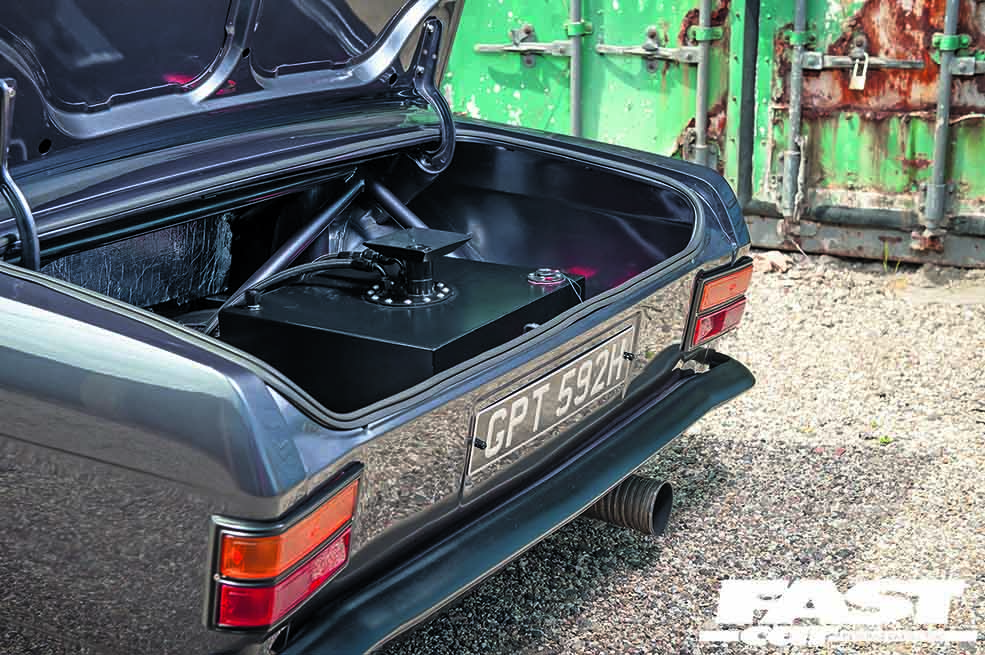
“For me, a car’s stance makes or breaks it,” reveals Jamie. “The wheels and tyres were one of the first things I bought, so we could build the car around them. We then fixed the axle to the car at the ride height I wanted and set about the five-links and turrets. We didn’t have much clearance over the top of the axle with such low ride height, so the floor above the axle was cut out and raised with a large diff tunnel fitted.”
Once the rear was finished, the car was sent to fabricator, Alan Dent to complete the complex roll-cage, space frame front end and Sierra suspension set up. Upon its return, Jamie wisely spent plenty of time dry building the car to ensure every last little part would fit before it was sent for painting. Although it took a lot of time, this attention to detail clearly shows in the final fit and finish of the car. “I didn’t really push that hard on the build, it was quite an on-off project,” he admits. “But I like taking the time to run wires and hoses neatly out of sight where possible. I wanted a clean-looking car and with it being stripped out like it is you have to come up with ways of doing things to hide stuff, which I enjoy.”
But it hasn’t all been smooth sailing, as the build was slowed down by a six-month delay at the exhaust fabricators and further year wait to get the car painted! It was worth it though, as Jamie opted for something suitably different and defining when it came to the colour scheme, as he explains:
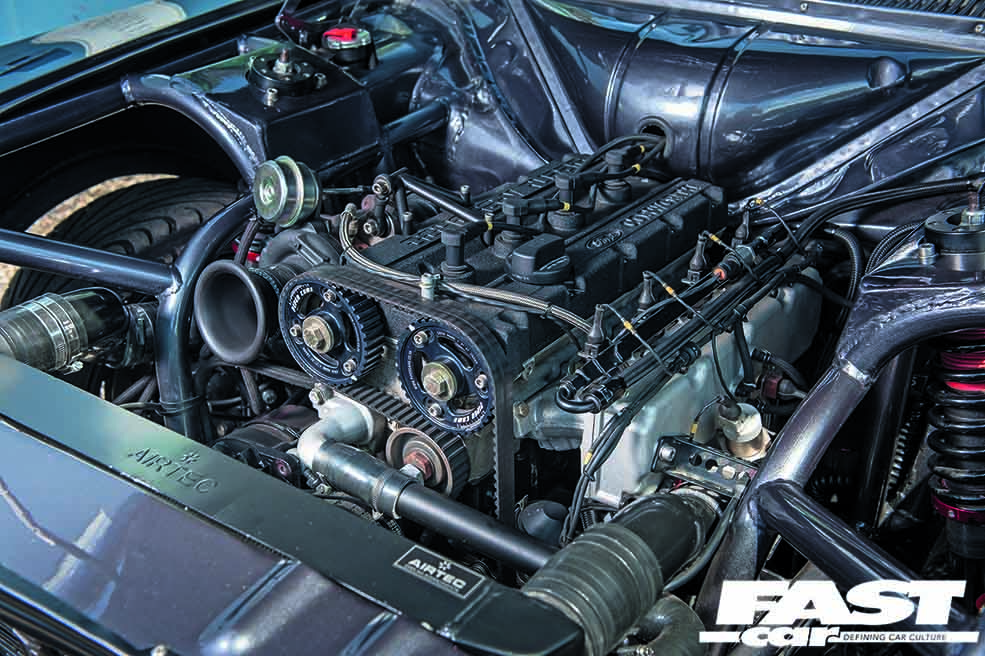
“I wanted a gunmetal grey colour as I hadn’t seen many Mk2s in that shade and I thought it suited the car. And I don’t think shiny chrome really suits the look of the car, so had it all done black.”
After lots of hard graft and late nights, it was time to hit the road at last, but things didn’t quite go to plan there either. The car proved to feel very unsettled at speed, so Jamie went back to Alan Dent for some advice. “As soon as he looked at it, he said it was too low and too hard! But after he set everything up it drove million times better.”
More recently, Jamie has also changed the springs to soften the ride up and help improve grip off the line at the drag strip, which is something he has found himself unexpectedly taking to now he has a suitable car for it!
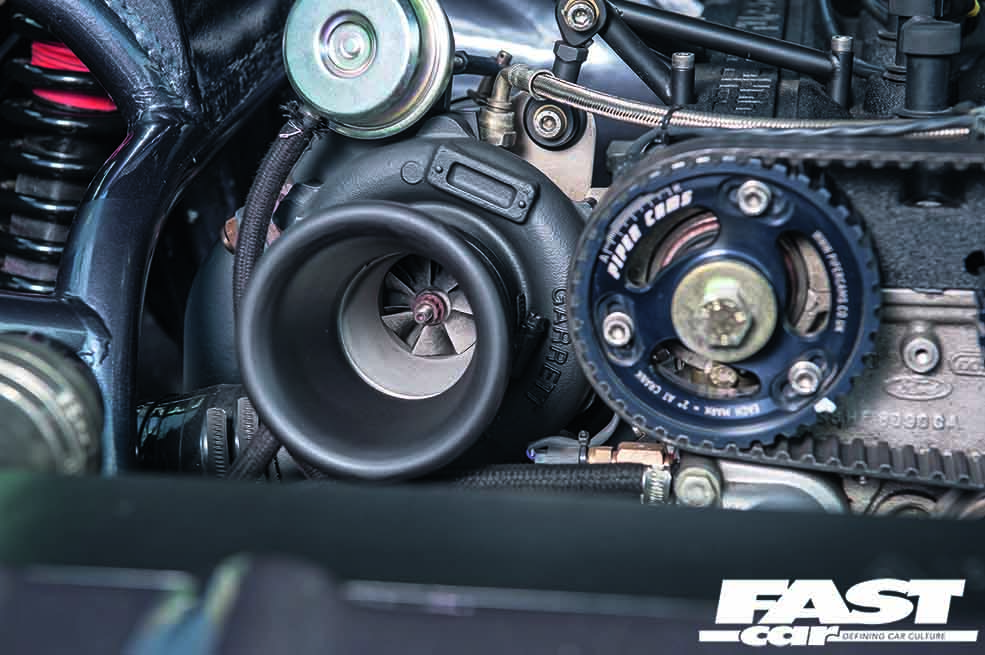
“I never set out with the intension of going racing, the idea just kind of evolved during the build. I wanted to be able to modify and upgrade the car over time, so working with aftermarket and performance parts gave the flexibility to evolve the car. I haven’t tracked it yet, mainly as I’ve found myself quite enjoying drag racing, but I think I’m going to pursue that in the future.”
Plans now are to push the car’s performance even further by reducing weight and increasing power, with the idea of rebuilding the engine to break the 500bhp mark with either a GT30 or Borg Warner EFR turbo. The M3 seats are also going to be replaced with a single, alloy racing seat and the glass will be replaced by perspex. But that’s not all. “I’ve also committed to a bit of a lifestyle change to loose some weight, mainly inspired by the racing,” says Jamie. “I was knocking on the door of 200kg, which is quite a weight penalty, so hopefully loosing weight will pay off with some better times up the strip.”
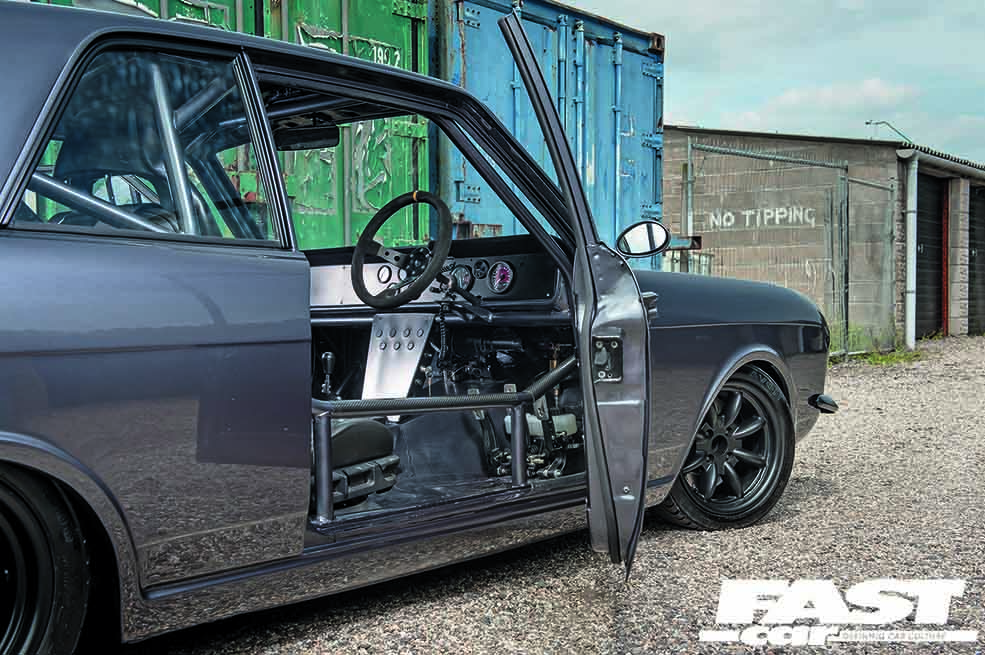
It looks like one of the toughest Cortinas on the road has plenty more planned… not to mention plenty more to prove.
Tech spec
Engine
Cosworth YB, 200 block, six-long studs, WRC metal head gasket, high pressure oil pump, big-wing sump, standard 2wd head and cams, Piper cam pulleys, 4wd inlet manifold, Siemens 55 black injectors, 2wd exhaust manifold, Garret T34.48 turbo, -34 actuator, full 3 inch stainless steel exhaust system, Setrab remote oil cooler, Airtec 60 mm RS500 intercooler and 50 mm radiator with twin fans, Airtec breather and catch tank, L8 ECU with MSD wasted spark kit, 3 Bar MAP sensor, Raychem engine loom, Fuel Lab pressure regulator, alloy foam filled fuel tank, external swirl Pot, Bosch 044 fuel pump, Holley black top lift pump, Torques braided fuel lines and stealth black fittings. Built and dyno mapped by Harvey Gibbs. Power: 389 bhp at 6000 rpm, 400lb.ft at 2900 rpm, T5 gearbox, quickshift, Helix six-paddle clutch, Reyland Motorsport hydraulic clutch Kit, D&F large diameter propshaft, Atkins Motorsport custom narrowed Atlas axle, Gripper LSD, RACE two-piece shafts, alloy flanges, alloy brace plate.
Chassis
7 and 9×15-inch Compomotive ML wheels in matt black, 195/45R15 and 245/40R15 Avon CR500 tyres, AVO coilovers, Alachi front crossmember, Cosworth front hubs, custom adjustable TCAs and compression struts, drop link anti-roll bar, alloy top mounts, Corsa electronic power steering, custom five-link rear end AP Racing CP5040 callipers, two-piece 305 mm J-hook discs, MK Motorsport alloy bells and calliper brackets, Ferrodo DS3000 pads (front), Cosworth 4×4 calipers, two-piece 300 mm grooved discs, alloy bells and calliper brackets, Ferrodo DS2500 pads (rear), Tilton 600 floor mount pedal box, Tilton cylinders, hydraulic handbrake, Hurst electronic line-lock, full stainless steel braided brake lines.
Exterior
1969 MK2 Cortina Super two-door, full roll-cage and front-end spaceframe, larger gearbox tunnel, raised propshaft tunnel, raised rear floor with larger diff tunnel, custom four-link boxes, larger suspension turrets, shell blasted, front quarter bumpers, all trim powdercoated matt black, door handles and locks black Cerakoted. Paint: BMW Sparkling Graphite Metallic.
Interior
BMW M3 Vader seats, TRS four-point harnesses Stack ST700 display and speedo, Stack Pro gauges, custom dash panel, flocked dash top, alloy centre panel with CBS billet switches, alloy door cards, rear panels and firewall.
Feature taken from Retro Cars magazine. Words by Simon Holmes. Photos by Dan Sherwood

